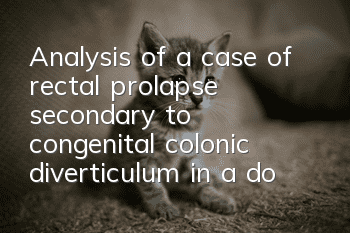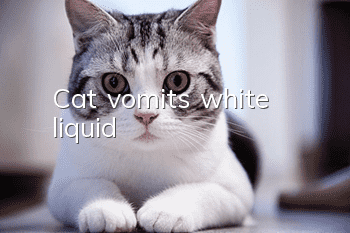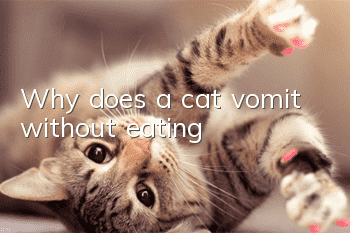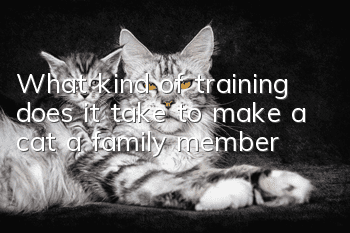Analysis of a case of rectal prolapse secondary to congenital colonic diverticulum in a domestic cat

Date of first consultation: December 1, 2016
Basic information: Soybean, stray cat, male, 1Y, BW: 1.5kg, not vaccinated and dewormed, not sterilized, yellow and white color
Main complaint: The cat was found to have rectal prolapse for about a week, and underwent plastic surgery at a clinic elsewhere. Three days after the operation, the sutures were torn off, and prolapse occurred again, so he came to our hospital for treatment.
Questionnaire: The animal is a stray cat rescued by caring people, named Huangdou. It eats, drinks and urinates normally, but has diarrhea. It has been fed ordinary cat food since the rescue;
Basic clinical examination: TPR is normal, mental status is acceptable, appetite is strong, CRT=2s, BCS(2/9), no obvious abnormality is found on palpation of the abdomen, rectal prolapse, the prolapsed part is about 4cm long, cylindrical, and swollen. , dark red, serious pollution around, no other obvious abnormalities.
Laboratory tests: infectious disease screening, CBC, stool examination, complete biochemical test, DR (anterior and lateral abdominal view),
Initial diagnosis: 1. Rectal prolapse; 2. Severe malnutrition;
Treatment: After communicating with the animal owner, it was decided to adopt conservative treatment first and then perform rectal plastic surgery again. If the effect was little, internal rectal fixation was performed.
Treatment process: Because the animal's physical condition was too poor, the total number of white blood cells in the routine blood test was 0.8, so the operation was not performed on the day of treatment. Instead, the animal's physical condition was adjusted first, and treatment was performed after meeting the surgical conditions; after two days of conditioning, the routine blood indicators were normal. , TPR was normal, and rectal plastic surgery was performed. On the third postoperative day, the sutures were avulsed again, and the rectum prolapsed again, so it was decided to use internal rectal fixation instead.
The surgical process of rectal fixation: routine preoperative preparation, anesthesia, retracting the prolapsed rectum, opening the abdominal cavity, and checking the overall condition of the intestine. It was found that the sick animal had intussusception. After repairing the intussusceptive intestine, it was found that There was a diverticulum in the colon, and the outer layer of the tee was tightly wrapped by fibrotic serosa. The cause of rectal prolapse in the sick animal was found. After comprehensive consideration, the wrapped part of the intestine was peeled off and excised. The diverticular part is removed and the nodule is sutured.
Prognosis: On the third day after internal rectal fixation, soft food and nutritional paste were fed. One week after the operation, the stool shape was good, and no rectal prolapse was seen. The effect was obvious and there was no recurrence. The cat was visited 15 days after the operation. The cat was in good condition and weighed There has been some growth.
Analysis: Rectal prolapse is the result of a combination of multiple factors. The direct cause is due to relaxation and insufficiency of the rectal ligaments and anal sphincter in young, old and weak dogs. The causes include enteritis, gastritis, long-term acute diarrhea, proctitis tenesmus, prostatitis, increased abdominal pressure, constipation, and rectal fissure. Injury, delayed dystocia, intense exertion caused by neoplasms and foreign bodies in the rectum, feeding multi-fiber foods lacking protein, water and vitamins, malnutrition, physical weakness, severe infectionParasitic diseases, etc. The disease is often secondary to digestive tract diseases caused by bacteria, viruses and parasites, such as canine parvovirus, canine distemper virus, coronavirus, intestinal bacteria, roundworms, coccidia and other infections, as well as cat gastroenteritis and hair loss. Ball blocking etc. In addition, intussusception is one of the main causes of rectal prolapse.
In pet clinical practice, there are roughly three treatment options for rectal prolapse in dogs and cats: 1. Reconstruction of the prolapsed rectum; 2. Anal purse-string suture; 3. Abdominal wall internal fixation surgery. Mild rectal prolapse should first be treated with conservative treatment. If it is ineffective, surgical treatment can be used to avoid unnecessary damage. However, in severe cases, abdominal wall internal fixation surgery has a good prognosis.
Finally, we would like to thank Paimate Comfort Pet Hospital for providing us with the cases.
- What are the dangers of parasites on cats? Tens of thousands of parasites sleeping with you?
- What does the cat with four hooves trampling on the snow symbolize?
- Symptoms of rhinitis in cats
- Take stock of the sleeping areas cats like
- Is it good to keep a cat in a cage? It will affect the change of the cat’s personality.
- Why do Siamese cats look darker and darker?
- Why do cats throw up hairballs and vomit?
- Will Cat Sanlian become effective after a few hours at room temperature?
- The correct way to soak goat milk powder in cat food
- Why do girls like cats



